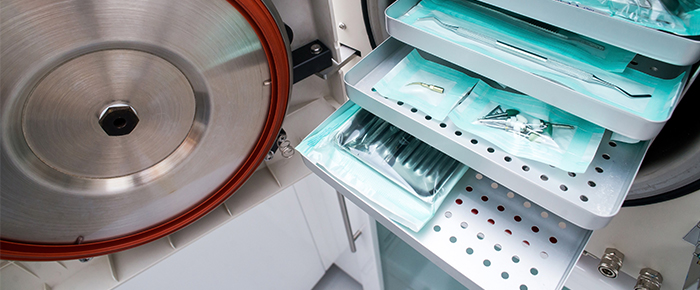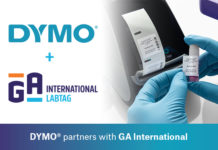
The steam autoclave is used ubiquitously throughout the scientific and medical world as one of the most prominent forms of sterilization. Using a powerful combination of high heat and pressure, hospitals and research labs depend on autoclaving (alongside labels that resist steam sterilization) to ensure that the equipment used to treat patients, animals, and cell cultures isn’t teeming with bacteria and viruses. With such an important role to play, it’s worth reviewing the history of the autoclave, along with some of the newer features that have been added throughout the years.
The “steam digester”
The history of the autoclave goes back to 1647, the birth date of Dr. Denis Papin. Having studied medicine and received his MD in 1669 from the University of Angers, he left for Paris to begin a career in science under the direction of Christiaan Huygens, working on an air pump, then moving to London in 1675 to work with Robert Boyle and Robert Hooke. Though much of his work was centered on air pumps, he would also go on to invent a “steam digester” that basically acted as a pressure cooker with a safety valve. The digester looked like a potbellied stove, consisting of a metal cylinder with a glass vessel. The cylinder could be filled with water equal to the difference in volume between the glass container and the cylinder itself, with meat and liquid placed inside the container, then sealed. Heat was applied from a fire under the cylinder, with a safety valve to remove excess steam once the inside had reached a high enough pressure. Papin eventually published a detailed account of his digester in 1681 in an article titled, “A new digester or engine for softening bones, containing a description of its make and use.”

The first autoclave
No discussion of autoclaves can be made without mentioning Dr. Charles Chamberland. Having entered the lab of Dr. Louis Pasteur around 1875, he began work on an anthrax vaccine for animals. Ultimately, the work performed in Dr. Pasteur’s lab on both anthrax and rabies led to the creation of the Pasteur Institute, where Dr. Chamberland would become the assistant director in 1904, where he was responsible for the “Service de microbie appliquée à l’hygiène et du Service des vaccins.”
However, before becoming assistant director, he took an interest in inventing tools and machines, obtaining a doctorate in physical sciences in 1879. His thesis, titled “Recherches sur l’origine et le développement des organismes microscopiques,” translated as “Research on the origin and development of microscopic organisms,” was the first step that led to him to investigate sterilization techniques, ultimately inventing the autoclave.
Improved technology
Over the years, several milestones have been achieved that have fundamentally improved the steam sterilization method. These include:
1928: Development of the high-pressure steam sterilizer
1988: Cooling tower for reduced process water consumption
2014: Integrated electronic Bowie-Dick test for testing pre-vacuum cycles that are sterilizing wrapped goods or packs
The autoclave is now a fixture of almost every research and healthcare institution, from biological labs to dental offices and hospitals. Since their conception, they’ve come a long way, incorporating new features and other recent technological advancements. This includes touchscreen pads, internal temperature and pressure sensors, printers that deliver status reports, and auto-locking mechanisms on newly purchased autoclaves. Some models come with Ethernet ports and WiFi connectivity that help optimize updating processes and allow users to perform remote maintenance and remotely control the instrument. Crucially, the materials used to produce the autoclave are now made to be resistant to corrosion, ensuring their longevity. Even label technology has adapted, with an entire array of specialized products that resist autoclaving and other forms of sterilization, all of which can be adapted to nearly any laboratory environment.
The steam autoclave isn’t one of the more complex instruments you can buy. However, its utility in sterilizing tools and consumables is nearly unparalleled throughout the science and medical world, making it one of the most important inventions of the last several hundred years.
LabTAG by GA International is a leading manufacturer of high-performance specialty labels and a supplier of identification solutions used in research and medical labs as well as healthcare institutions.


